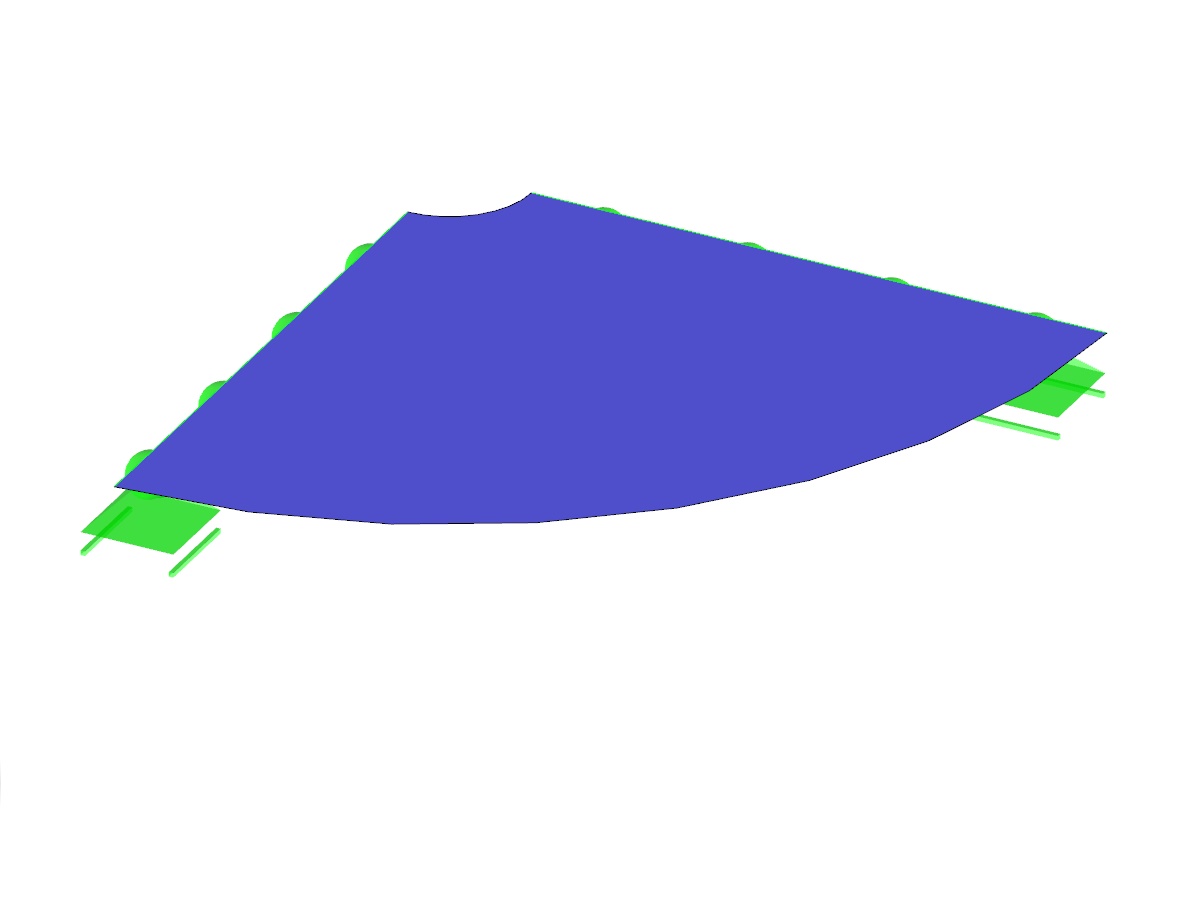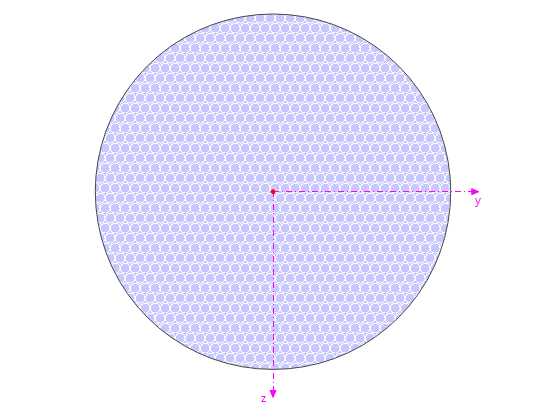Introduction
The Architectural Institute of Japan (AIJ) has presented a number of well-known benchmark scenarios of wind simulation.
This model deals with "Case A – High-Rise Building with 2:1:1 Shape".
In the following text, the described scenario is simulated in RWIND 2 and the results are compared with the simulated and experimental results by the AIJ.
Case A describes a simple cuboid building that is twice as high as it is wide and deep.
The flow velocity was evaluated in the simulation along several straight lines that are positioned parallel to the height axis in the longitudinal symmetry plane at different distances.
In the AIJ experiment, a corresponding model was set up in a wind tunnel and the wind speed was measured using split fiber probes at points along the straight lines mentioned.
The authors used the STREAM ver.2.10 software; RWIND Pro 2.02 was used in this article. The model structure in RWIND was adapted as closely as possible to the structure in STREAM.
Model Layout
The standard k–ε was used as the turbulence model, assuming a steady flow. The flow is perpendicular; due to the symmetry, it does not matter on which surface of the xz- or yz-plane. Dimensions, flow velocity, and turbulence behavior were taken from the original publication [1]. The flow velocity over the height is summarized below.
| Altitude in km | Flow Velocity in m/s | |
|---|---|---|
| 1 | 0.01 | 2.745 |
| 2 | 0.02 | 2.935 |
| 3 | 0.04 | 3.175 |
| 4 | 0.08 | 3.435 |
| 5 | 0.12 | 3.627 |
| 6 | 0.16 | 3.824 |
| 7 | 0.20 | 4.021 |
| 8 | 0.24 | 4.21 |
| 9 | 0.28 | 4.362 |
| 10 | 0.32 | 4.491 |
| 11 | 0.33 | 4.502 |
| 12 | 0.34 | 4.586 |
| 13 | 0.36 | 4.606 |
| 14 | 0.38 | 4.712 |
| 15 | 0.42 | 4.854 |
| 16 | 0.46 | 4.993 |
| 17 | 0.50 | 5.132 |
| 18 | 0.60 | 5.449 |
| 19 | 0.70 | 5.782 |
| 20 | 0.80 | 6.077 |
| 21 | 0.90 | 6.338 |
| 22 | 1.00 | 6.588 |
| 23 | 1.10 | 6.693 |
| 24 | 1.20 | 6.751 |
The model layout is shown below.
The experimental results of the AIJ were published on their website [1].
The displayed data of the AIJ simulation were determined using the ENGAUGE Digitizer tool [2] from the plots of the publication [1], since the exact values for this were not published.
However, the accuracy of the extracted points should be sufficiently accurate (in the range +-0.5%) and therefore easily comparable.
Results and Discussion
To visualize the flow velocity along the evaluation curves, the plot of the original publication was adapted [1].
In the following text, the result of RWIND Simulation has been entered in that diagram for better comparability.
In general, it can be observed that the simulation results from RWIND correspond to the benchmark better than the reference simulation, the further the respective measuring point is from the test specimen. This can be seen in the 8th and 9th evaluation lines from the left.
Superior results could also be consistently reproduced along the 5th evaluation line across different mesh densities and mesh densities of the reference simulation.
Only in the ranges from 0 to about 50% of the building height can a strong deviation along the 6th and 7th evaluation line from the left be observed in RWIND. A modified mesh refinement around this area could change the deflection of the flow velocity, but did not necessarily improve it. A less dense mesh improved the correlation at a low height, but made it worse at a medium and high height.
Furthermore, the flow velocity on the sides of the parallel flow path increases more steeply than in the reference simulation. This difference is probably due to the "shrink-wrap-mesh" in RWIND, as the effect could be reduced by increasing the level of detail or reducing the size of the elements. Since the object has been directly meshed in the reference model, the effect does not occur there. However, the extent and relevance of the anomaly can be rated as low, as the experimental data were nevertheless well mapped and the effect is locally very limited.
All in all, the results for the compression area can be considered as very good. The strong suction area, however, shows weaknesses. This is because the suction range still shows very good agreement with the experimental benchmark, especially at greater distances from the building.
A specific reason for the significant difference could not be identified; a different turbulence model or a finer resolution analysis would be potential approaches.
In addition, the original publication analyzed the flow velocities in the x-y plane at a height of z/b=1.25, that is, 0.1 km.
This analysis was also carried out in RWIND, where the flow tensor was also evaluated along straight lines. The following image shows the position of this straight line. The distances between the lines were taken from the published results [2] and are identical to the model structure in the image above.
The results are shown in the following plot in the same style as the longitudinal analysis. The color scheme was kept congruent.
The top-side view confirms the longitudinal view. The results of the RWIND simulation correlate well with the experimental benchmark and the CFD simulation. Apart from the observation described above regarding parallel flow around surfaces, there are no relevant weaknesses of the simulation in RWIND.
For a clearer comparison of the reference simulation with the RWIND results, it is advisable to view the flow velocities as a bottle color image. The section around the building under consideration was adapted to that of the authors [1]. For copyright reasons, the false color images are not compared side by side here. The result is shown below.
There is also very good correlation with the literature simulation. The occurring deviations only result in the already mentioned suction area.
Conclusion
Finally, it can be stated that there is very good correlation between RWIND Simulation and STREAM Simulation of the literature as well as the underlying experiment. In the compression area, RWIND tends to match the experiment better, whereas in the suction area, STREAM is better able to reproduce the experiment.
[1]
Guidebook for CFD Predictions of Urban Wind Environment
[2]
Engauge Digitizer























.png?mw=350&hash=c6c25b135ffd26af9cd48d77813d2ba5853f936c)






,_LC1__LI.jpg?mw=350&hash=35da17f7b39d287e41788cfc854d3e0126035f4d)























_1.jpg?mw=350&hash=ab2086621f4e50c8c8fb8f3c211a22bc246e0552)





-querkraft-hertha-hurnaus.jpg?mw=350&hash=3306957537863c7a7dc17160e2ced5806b35a7fb)


.png?mw=600&hash=49b6a289915d28aa461360f7308b092631b1446e)














